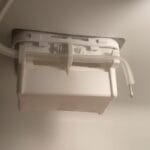Experiencing issues with your Samsung washer can be frustrating. But, with the right guidance, many problems can be fixed easily.
In this blog post, we’ll dive into common Samsung washer problems and how to troubleshoot them. Understanding these issues can save you time and money. Whether your washer won’t start, is making strange noises, or isn’t draining properly, we’ve got you covered.
Simple solutions can often resolve these problems. With clear steps and practical tips, you’ll be able to get your washer back in working order. Let’s explore how to diagnose and fix the most frequent Samsung washer issues. Stay with us to learn more and keep your laundry routine running smoothly.

Credit: www.samsung.com
Common Error Codes
Samsung washers are known for their reliability. Yet, even the best appliances can face issues. Understanding common error codes is key to troubleshooting. These codes provide insight into the problem. This section will help you identify and resolve common errors.
Identifying Error Codes
Samsung washers display error codes on the screen. These codes help diagnose problems. Here are some frequent error codes and their meanings:
| Error Code | Meaning |
|---|---|
| 4E | Water supply issue |
| 5E | Drainage problem |
| UE | Unbalanced load |
| LE | Leakage detected |
| HE | Heating error |
Solutions For Common Errors
Once you identify the error code, you can take steps to fix it. Here are solutions for common errors:
- 4E: Ensure the water supply is on. Check hoses for kinks or blockages.
- 5E: Clean the drain filter. Inspect the drain hose for clogs.
- UE: Redistribute the laundry. Make sure the washer is on a level surface.
- LE: Check for leaks around the washer. Tighten any loose connections.
- HE: Verify the heater’s connections. Replace the heating element if needed.
Regular maintenance prevents many issues. Follow these steps to keep your Samsung washer running smoothly:
- Clean the drum monthly.
- Inspect and clean filters regularly.
- Check hoses for wear and tear.
Washer Not Starting
A Samsung washer that won’t start can be frustrating. Several factors can cause this issue. This section will guide you through some common problems. Let’s explore the possible reasons and solutions.
Power Supply Issues
The washer may not start due to power supply issues. Here are some steps to check:
- Check the power cord: Ensure it is plugged in securely.
- Inspect the outlet: Plug another device to check if the outlet works.
- Test the circuit breaker: Verify if it has tripped. Reset if necessary.
If the power supply seems fine, move on to the next step.
Door Lock Problems
The washer won’t start if the door is not locked properly. Here’s what you can do:
- Check the door: Ensure it is closed completely.
- Inspect the latch: Look for any visible damage.
- Listen for a click: The door should click when locked.
- Test the door switch: Use a multimeter to check for continuity.
If the door lock is the issue, it may need replacement.
| Issue | Solution |
|---|---|
| Power Supply | Check the cord, outlet, and circuit breaker |
| Door Lock | Ensure the door is closed, inspect the latch, listen for a click, test the switch |
Water Filling Issues
Water filling issues can be frustrating. Your Samsung washer may fail to fill properly, causing delays in laundry tasks. This problem often stems from a few common issues. Understanding these can help you fix the problem and get your washer running smoothly.
Checking Water Supply
First, ensure your water supply is on. Check both the hot and cold water faucets. They should be turned fully open. If you find any leaks, fix them immediately. Leaks can reduce water pressure, affecting washer performance.
Inspecting Inlet Valve
The inlet valve controls water flow into the washer. Unplug the washer before you start. Remove the hose from the back of the machine. Check the valve screen for clogs. Clean it if necessary. If the valve appears damaged, it may need replacing.
:max_bytes(150000):strip_icc()/samsung-front-load-washer-fault-codes-2147297_final-fbe1df0aaa4540bbac79238436bead3d.png)
Credit: www.thespruce.com
Drainage Problems
Is your Samsung washer not draining properly? This can be frustrating. Drainage issues can prevent your clothes from getting clean. Thankfully, there are simple solutions to fix this problem.
Clogged Drain Hose
The drain hose can sometimes get clogged. This happens if dirt and debris build up. To check, first, unplug the washer. Next, pull the washer away from the wall. Disconnect the drain hose. Look for any blockages inside the hose. Use a long brush or stick to remove any debris. Reconnect the hose and plug in the washer. Test to see if it drains properly.
Pump Filter Cleaning
The pump filter can also get clogged. This filter catches small items and lint. First, unplug the washer. Locate the pump filter at the front, usually at the bottom. Open the filter cover. Place a towel or tray under the filter to catch water. Turn the filter cap counterclockwise to remove it. Clean out any debris inside. Rinse the filter under running water. Replace the filter cap and close the cover. Plug in the washer and run a cycle to check drainage.
Vibration And Noise
Experiencing vibration and noise with your Samsung washer can be frustrating. It can indicate various issues that need attention. Addressing these issues can prevent further damage and ensure smooth operation.
Balancing The Load
An unbalanced load can cause the washer to vibrate and make noise. Distribute clothes evenly around the drum. Avoid overloading the washer, as it can lead to imbalance. Heavy items, like towels, should be spread out.
Check if the washer is level. Use a spirit level on top of the washer. Adjust the feet until the washer is stable. Proper leveling reduces vibration and noise.
Inspecting Shock Absorbers
Shock absorbers reduce movement and vibration. If they are worn out, the washer will shake more. Inspect the shock absorbers for signs of wear or damage.
Access the shock absorbers by removing the front or rear panel. If you see leaks or damage, replace them. New shock absorbers can significantly reduce vibration and noise. Ensure they are installed correctly for optimal performance.
Washer Not Spinning
Is your Samsung washer not spinning? This common issue can be frustrating. Without the spinning action, clothes come out soaked. Identifying the problem helps fix it quickly. Let’s explore some common causes.
Lid Switch Malfunction
The lid switch signals the washer to spin. If faulty, the washer won’t spin. Check the lid switch for any visible damage. A multimeter can test its functionality. Replacing a faulty lid switch usually solves the problem.
Drive Belt Issues
The drive belt connects the motor to the drum. If the belt is worn or broken, the drum won’t spin. Inspect the belt for any signs of wear or damage. A loose belt can also cause issues. Tighten or replace the belt to restore the spinning function.
Leaking Water
Experiencing water leaks from your Samsung washer can be frustrating. Various causes might lead to leaking water. This guide will help you troubleshoot and fix those leaks. Let’s focus on two common areas: hose connections and door seal inspection.
Hose Connections
First, check the hose connections. Loose or damaged hoses often cause leaks.
- Inspect both ends of the hose. Ensure they are securely attached.
- Look for any cracks or holes in the hoses. Replace if necessary.
- Tighten the connections. Use pliers if needed, but avoid overtightening.
Another area to check is the water supply valve. Make sure it is fully open and functioning correctly. If the valve is faulty, it might need replacing.
Door Seal Inspection
The door seal, or gasket, is another common source of leaks. Over time, wear and tear can cause gaps or tears in the seal.
- Examine the door seal. Look closely for any visible damage.
- Run your fingers around the seal. Check for any rough spots or tears.
- Clean the seal. Dirt and debris can prevent a proper seal. Use a damp cloth.
- If the seal is damaged, replace it. Refer to your washer’s manual for instructions.
By keeping these areas in check, you can often resolve leaks and keep your Samsung washer running smoothly.
Detergent Dispenser Issues
Is your Samsung washer’s detergent dispenser causing trouble? This common issue can disrupt your washing routine. Understanding the possible problems and solutions can help you get back on track. Let’s dive into the common detergent dispenser issues and how to fix them.
Cleaning The Dispenser
A clogged dispenser can prevent detergent from dispensing properly. Regular cleaning is essential. Remove the dispenser from your washer. Rinse it under warm water. Use a soft brush to scrub away any residue. Ensure all compartments are thoroughly clean. Dry the dispenser before reinserting it. This simple step can improve your washer’s performance.
Using Correct Detergent
Using the right detergent is crucial. High-efficiency washers need high-efficiency detergent. Regular detergent can cause excessive suds. This can block the dispenser and cause residue buildup. Always check the detergent label. Ensure it matches your washer’s requirements. This small detail can prevent many issues.

Credit: mastermindsofappliances.com
Frequently Asked Questions
Why Is My Samsung Washer Not Draining?
A clogged drain hose or filter might be the cause. Check and clean them to fix the problem.
How To Reset A Samsung Washing Machine?
Unplug the washer for a few minutes. Plug it back in and restart the machine.
Why Is My Samsung Washer Not Spinning?
The load might be unbalanced. Try redistributing the clothes evenly inside the drum.
How Do I Clean The Samsung Washer Drum?
Run a self-clean cycle with no clothes inside. Use a washer cleaner or vinegar.
What Does The Error Code “nd” Mean On My Samsung Washer?
“ND” stands for “No Drain. ” Check for blockages in the drain hose or pump filter.
Conclusion
Troubleshooting your Samsung washer can be simple with these tips. Identify issues early to avoid bigger problems. Regular maintenance extends the life of your machine. Clean filters and check hoses often. Consult the manual for specific errors. Don’t hesitate to seek professional help if needed.
By taking these steps, your washer will work smoothly. Save time, money, and avoid stress. Keep your laundry routine running efficiently. Happy washing!




